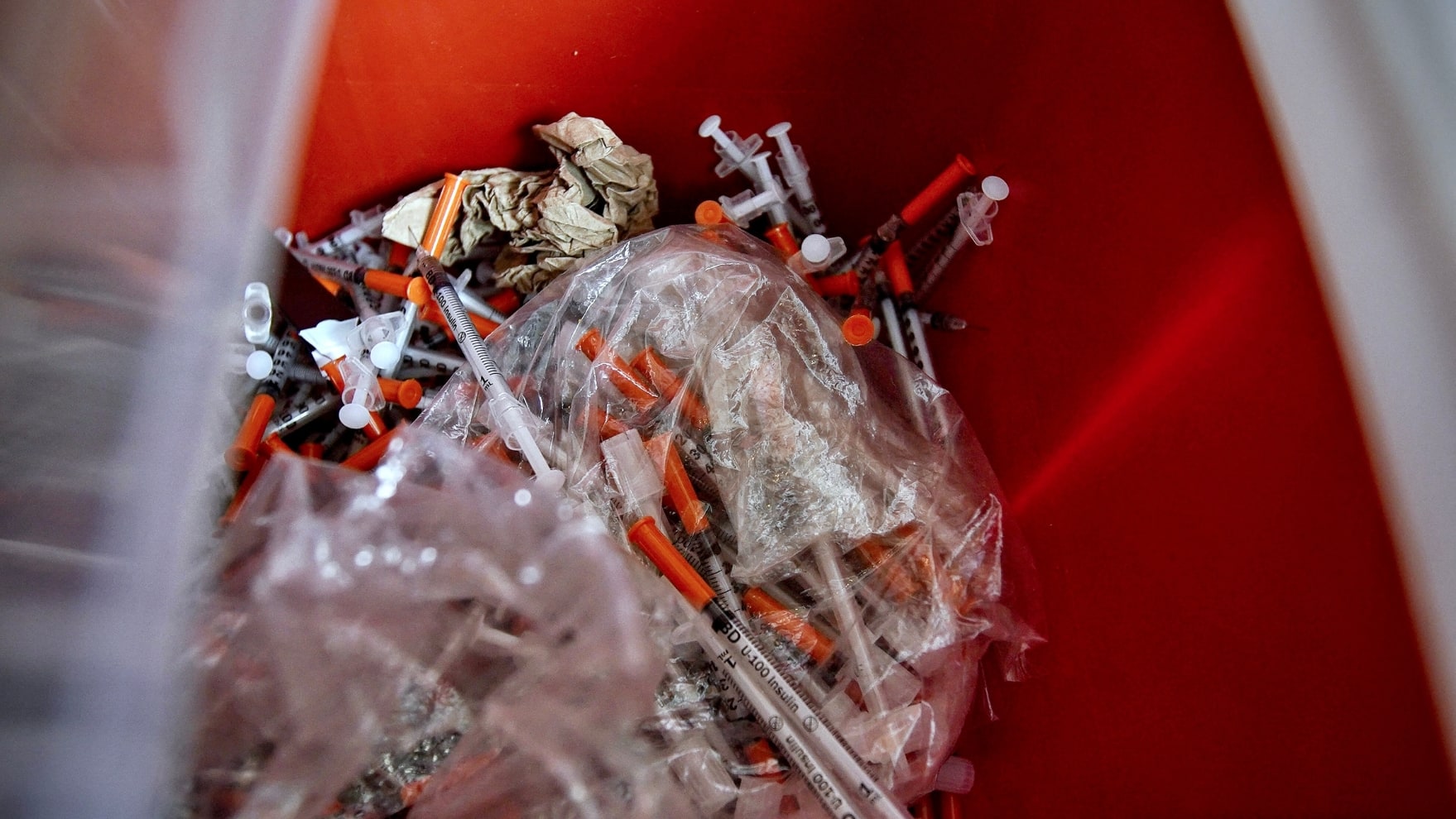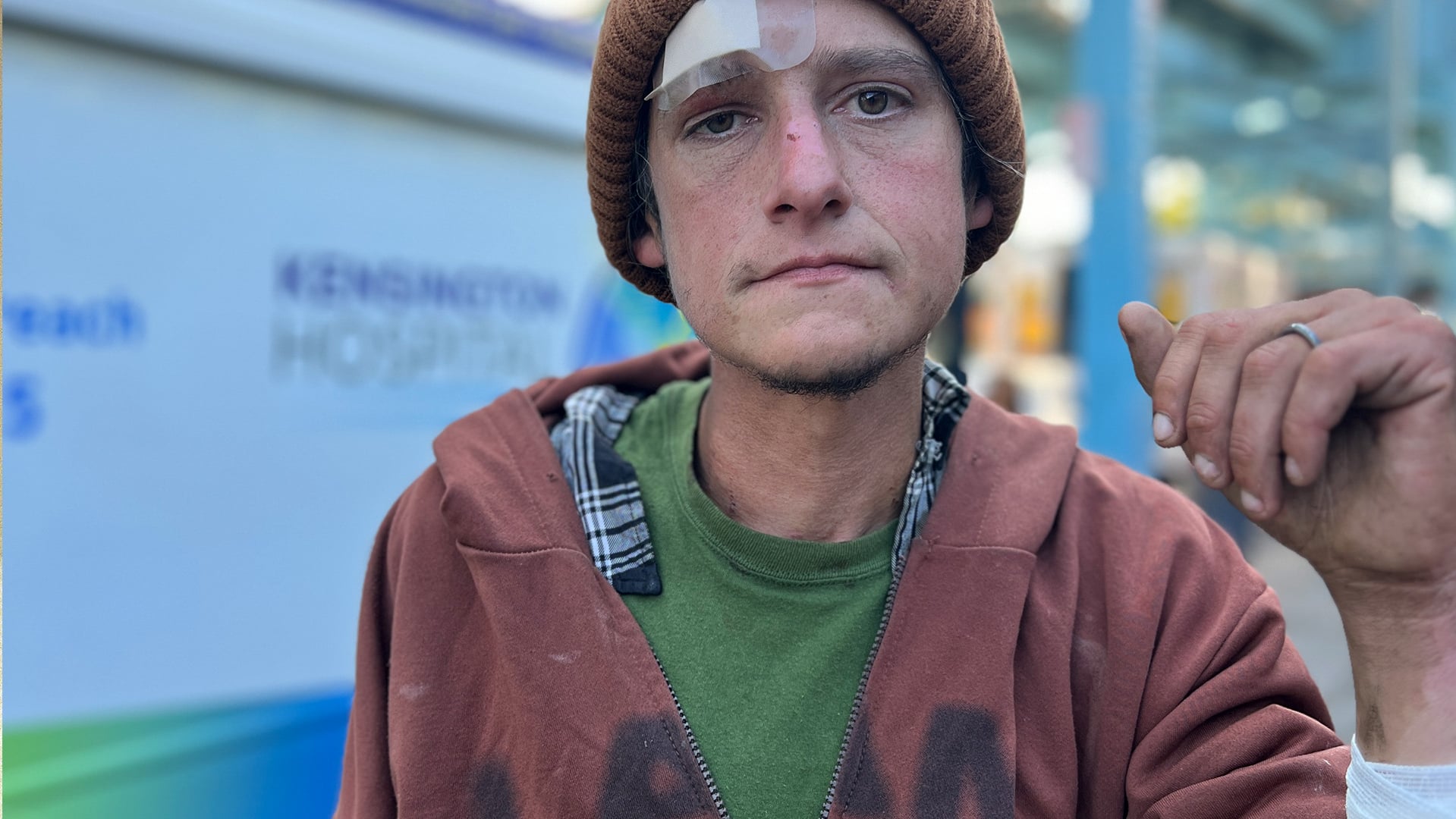
A drug testing service in Toronto says it has detected a new, highly potent animal tranquilizer circulating in the city’s unregulated drug supply.
Toronto’s Drug Checking Service (TDCS), a free and anonymous public health service offered at five harm reduction agencies, said in a Jan. 29 alert that it first identified a substance that is either medetomidine or dexmedetomidine late last month.
“Both are used to put either animals or people into deep states of sedation and we are finding this drug or drugs in the unregulated fentanyl supply,” said TDCS manager Hayley Thompson.
“[These drugs] repress the nervous system and respiratory system, putting people at greater risk of both fatal and non fatal overdose.”
Medetomidine is a tranquilizer approved only for use on animals, including dogs, while dexmedetomidine is approved for use in both humans and animals for sedation and pain relief.
In total, the service detected the substance in 15 out of 140 samples it tested between between Dec. 29 and Jan. 23. All of the samples were taken in downtown or the west end and were thought to be fentanyl . The two anesthetic drugs have very similar chemical structures and are being reported together because the service can’t currently differentiate between them, TDCS said.
The discovery highlights how new, dangerous additives continue to show up in Canada’s highly toxic drug supply, putting people who use drugs at higher risk of overdose and other negative health effects.
WATCH | Street drugs being laced with toxic animal tranquillizer xylazine:
A dangerous animal tranquillizer called xylazine is increasingly finding its way into the illegal drug supply, Health Canada data shows. The drug can cause serious side effects and is resistant to naloxone, the fast-acting medication that can reverse opioid overdoses.
More than 500 people died of opioid overdoses in Toronto in 2022, according to the latest city data. However, a Public Health Ontario report last year showed people in Ontario are increasingly dying with multiple toxic drugs in their system.
CBC News has previously reported on how xylazine, a severely potent veterinary sedative, is being cut with opioids like fentanyl to prolong their effects.
Xylazine is typically used to sedate large farm animals such as cattle and horses, but the tranquillizer is not approved for use in humans in Canada and its long-term effects on human health are unknown. As a central nervous system depressant, it dangerously suppresses vital signs like heart rate and blood pressure.
When mixed with fentanyl, it’s known as “tranq” or “zombie dope,” and can cause hours-long blackouts and horrific, painful wounds that can lead to amputation.
A March 2023 report from Health Canada showed the rapid spread of xylazine across the country during the past few years, with a growing number of street drug samples seized by law enforcement agencies testing positive for the tranquillizer — overwhelmingly in Ontario.
Medetomidine and dexmedetomidine are even more potent than xylazine because they are longer acting and produce greater sedation, TDCS said.
Those who use them may enter a “deep state of unconsciousness” and the risk of extreme drowsiness and sedation is increased when they are used in combination with high-potency opioids, benzodiazepine-related drugs, and xylazine.
The TDCS said all of the samples it tested that contained medetomidine/dexmedetomidine contained at least one high-potency opioid, such as fentanyl or carfentanyl, and many also contained a benzodiazepine-related drug or xylazine.
Naloxone, a medication used to reverse opioid overdoses, doesn’t work on them because they aren’t opioids.
Zoe Dodd, co-founder of the Toronto Overdose Prevention Society, said she’s not surprised by the appearance of the latest toxic additive to the drug supply.
Drug producers sometimes add substances like benzodiazepines or animal tranquilizers to mimic or extend the effects of opioids such as fentanyl, which can be short-acting, Dodd said.
“The cocktail of drugs that keep ending up in Toronto’s drug supply have been incredibly toxic for a number of years now,” Dodd said.
“We’re 10 years into this crisis and it just continues to get worse every minute.”
WATCH | How a flesh-rotting ‘zombie drug’ is complicating the overdose crisis:
Warning: Video contains distressing images | A menacing new additive is turning up in fentanyl and threatening to make Canada’s overdose crisis worse. CBC’s Ellen Mauro breaks down the risks of xylazine, better known as tranq.
TDCS said drug users can reduce potential harm by getting drugs checked before using, using at supervised consumption centres, using with others or letting others know if you’re using alone, and calling 911 in an overdose situation.
Toronto Public Health said in a statement that the city continues to experience a drug toxicity crisis. It’s calling for increased federal and provincial investments in prevention, harm reduction, and treatment supports.
“Overdoses and deaths due to the toxic drug supply are preventable,” TPH said.
Dodd and Thompson said more harm reduction services and the expansion of pilot programs offering people who use drugs access to a safe, regulated supply of drugs are needed.
Otherwise, Thompson said, people will continue to be forced to source their drugs from an unregulated supply that is “incredibly volatile, incredibly unpredictable and incredibly potent.”

